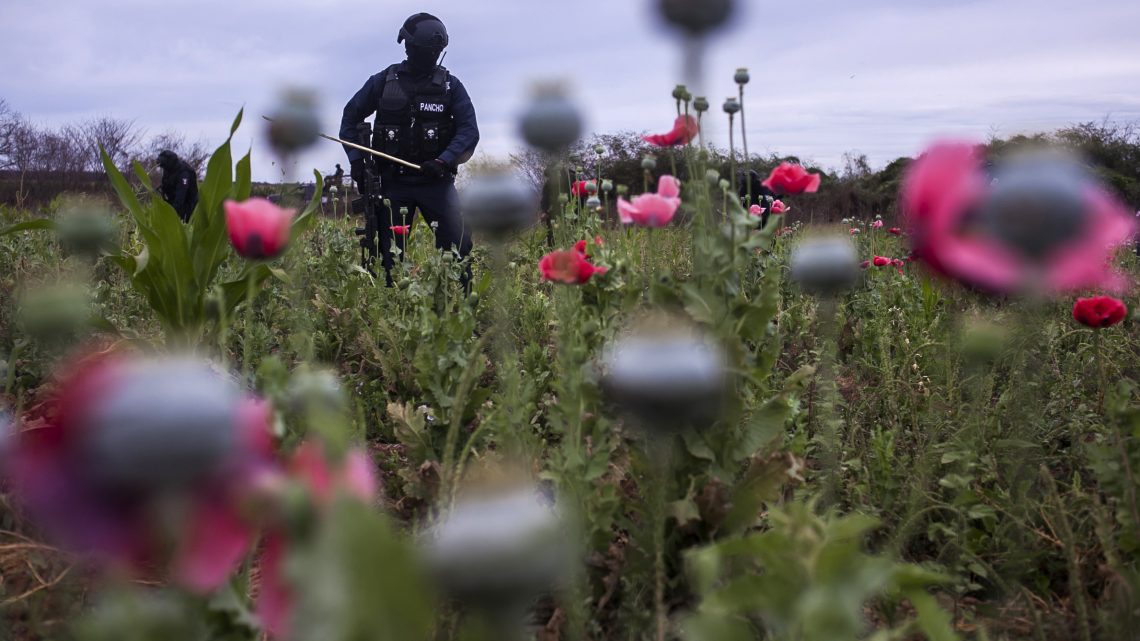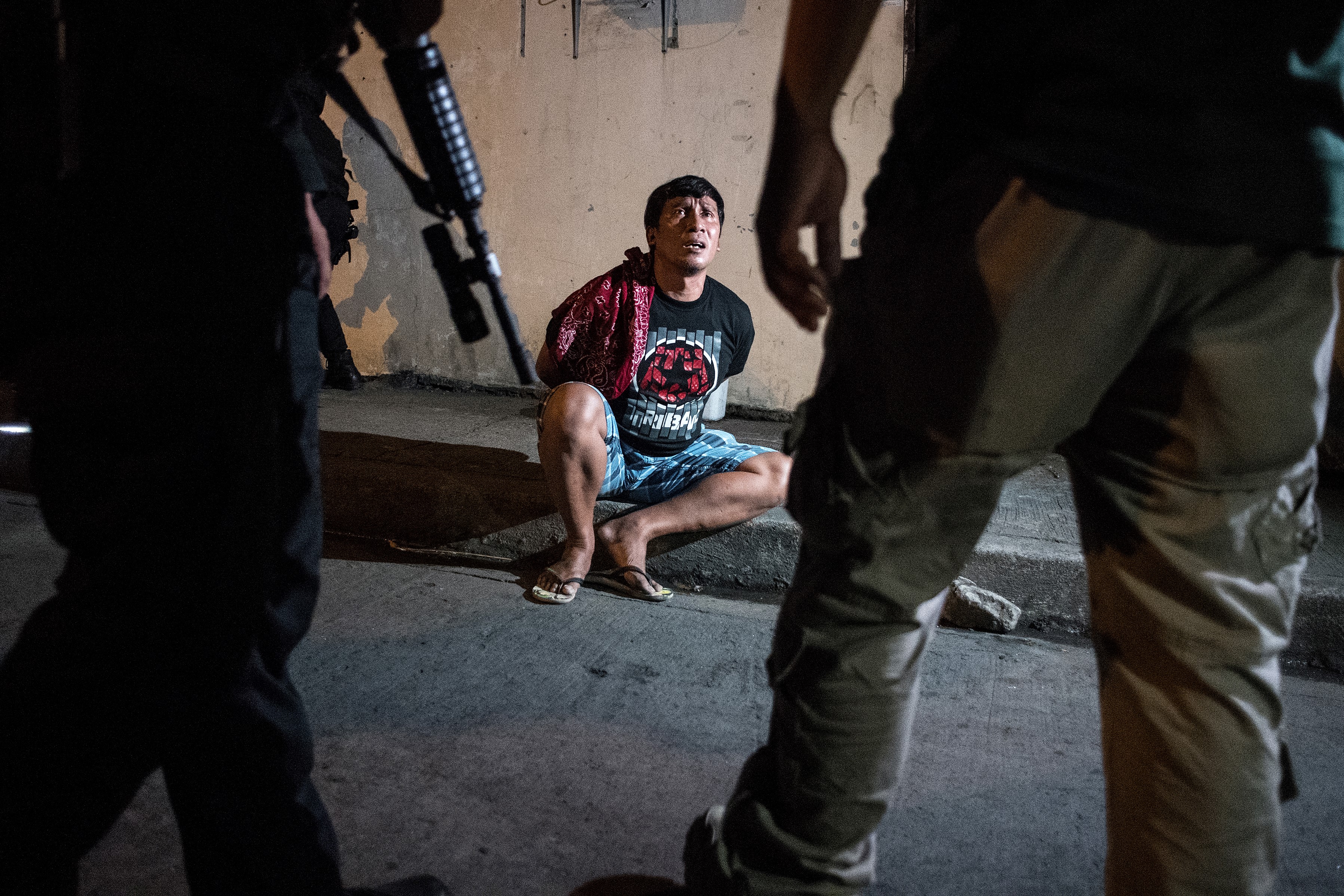
The World’s War on Drugs Has Failed Yet Again
October 23, 2018There has never been a more dangerous time to be a drug user.
The alphabet soup of substances now being illegally produced and sold across the world—from obscure research analogues and fake prescription pills to fentanyl and high strength ecstasy—has turned using drugs into a far more hazardous activity than ever before.
This risk is multiplied the more inexperienced or disenfranchised the user is. Young people are vulnerable to overdosing because they are inexperienced, while people addicted to drugs such as heroin and other opiates contribute to a large number of global drug deaths.
This expands out to selling too. Young, often exploited, street heroin and crack sellers and people who sell to feed their own habit are more likely to be scooped up by police dragnets than middle class coke dealers in a bar. From the heroin user dealing to feed a habit or the teenager who ends up being a drug gang's gofer on the streets as a way to earn a living, huge numbers of non-violent people face ruined lives while the big players and boutique vendors rack up the cash.
While there has been progress on policy and narratives around drugs, governments around the globe have continued to fail miserably in their attempts to quell drug use through criminalization.
This week the most detailed analysis yet of the last ten years of the global war on drugs was published by the International Drug Policy Consortium, an influential global network of 175 NGOs. It's the first report of its kind, and it’s devastating.
According to the report, Taking stock: A decade of drug policy, governments and the UN Office on Drugs and Crime have overseen a decade of fruitless carnage, where millions of people have been murdered, disappeared, or internally displaced amid a blizzard of overdoses, spiralling addiction, executions, extrajudicial killings and incarceration. Despite this, on almost every measurable level, this war on our own citizens has abjectly failed. Drug use and drug deaths have risen. Drug production has rocketed. Organised crime groups continue to use the drug trade as a vital supply line of cash.

In 2009, the UN published an updated set of policies meant to guide member countries in fighting drug use. One of the major aims of the UN's drug strategy was to “establish 2019 as a target date for States to eliminate or reduce significantly the illicit demand for narcotic drugs and psychotropic substances”. This fantasy goal of eliminating drug use was repeated by President Trump at a UN General Assembly meeting he convened only last month, where he said, “The United States looks forward to working with you to strengthen our communities, protect our families, and deliver a drug-free future for all of our children.”
Yet despite those lofty aims, in the years since the policies were published, cultivation of opium poppy has increased by 130 percent, and coca bush by 34 percent. Likewise, aims to eliminate or reduce the production of synthetic drugs and precursors, and crack down on narco-money laundering, have all been unsuccessful.
The UN itself estimated that at the very least 275 million people worldwide—one in 17 citizens—took an illegal drug in 2016. The IDPC report says there has been a 31 percent increase in global drug use since 2011. This isn’t some kind of freak flag subculture. Drug users run the entire spectrum of citizenry, and yet global drug policy has almost exclusively treated them as a problem to be disposed of.
Over the last decade, the report reveals, there has been a 145 percent increase in drug-related deaths, mounting to nearly half a million fatalities a year worldwide. There were more than 71,000 overdose deaths in the United States in 2017, fueled in part by an increasingly-hazardous list of synthetic drugs, including fentanyl, appearing on the scene as a direct response by suppliers to clampdowns on the traditional heroin trade.
It’s time to do away with the myths and hyperbole so often used when talking about drugs.
It doesn't stop at drug poisoning. Over the last decade, at least 3,940 people have been executed, many for non-violent drug offences with 33 countries retaining the death penalty for drug crimes. And that's just official state executions: The IDPC estimates there have been 27,000 extrajudicial killings in drug crackdowns. Many of these have been carried out by Philippines President Rodrigo Duterte, whose tactic of killing drug users and dealers without trial has been praised by President Trump. (Trump once told Duterte he was doing an "unbelievable job on the drug problem.") One in five prisoners in the world’s jails are inside for drug offences. In some Latin American countries and Thailand, over 80 percent of women in jail are serving sentences for drug-related offences.
This is exactly why the IDPC's 136-page report is so alarming, not only in terms of the sheer numbers of people who have been driven into addiction and crime, but because drug policy is consistently being used to punish the most socially excluded and vulnerable people on the planet.

The IDPC report was produced ahead of a high-level UN meeting in March next year, where ministers from around the world will make their own assessment of progress over the last decade. From this they will shape global policy over the next one. But it’s unlikely there will be much consensus. Paralysed by deeply divided approaches, the UN will likely usher through the same damaging, losing strategy of the last ten years to be repeated for the next ten.
After writing about drugs for the last 20 years, my conclusion is that the only way worldwide drug use will be eliminated is if Earth gets whacked by a colossal meteor. In the meantime, it’s time to do away with the myths and hyperbole so often used when talking about drugs. Drugs can be fun. They can also be dangerous. What is for sure is that they are not going away.
Recently I started the role of VICE’s first global drugs editor, unifying coverage across VICE offices in over 30 countries. It’s the first role of its kind in major media, and as the issue of drugs continues to provoke interest and controversy, other media organizations will surely follow.
We will be stepping up VICE’s already agenda-setting coverage of drugs, and sending out more journalists to talk and listen to people , not just politicians. We will continue giving real insight into the drug world, looking at why people take drugs, why they become addicted to them, why they sell them, and which policies work and which do not. Because it is only by examining the true nature of the drug issue that progress can be made.
If those who use drugs continue to be treated as criminals before they are seen as people, the need for open, honest reporting on this subject is paramount.
In his 1989 book Intoxication, the American pharmacologist Ronald K Siegel concluded that after the basic human desires of hunger, thirst, and sex comes a "fourth drive," an instinctive urge to change our ordinary state of awareness. The act of entering into an altered state is a fascinating human realm. But drug use is not just personal: the drugs we use and how we use them reflect our societies. Drug use is the litmus paper not only for how a society wants to feel but how it deals with transgression.
Global drug policy is at a tipping point. In Canada you can get a bank loan for selling cannabis while in the Philippines you get a bullet in the head. Which way will we be heading as a band of nations?

Progressive jurisdictions such as Canada, Uruguay, and several US states have chosen to breach international or federal law to legalize the cannabis trade. Bans on medicinal cannabis are being lifted in domino fashion across the world and more countries—even old school anti-drug warriors such as Norway—are ushering in decriminalization and harm reduction measures. They understand that the less drug users (and even sellers) are criminalized, the less they are stigmatized, and the easier it is to help them.
On the other extreme, hardline countries such as Russia, Iran, and China—the latter now a major producer of synthetic drugs used in the West—have further entrenched their highly punitive anti-drug regimes. In these countries, people addicted to drugs are deemed subhumans. Unsurprisingly addiction rates keep going up. In the Philippines, Indonesia and Bangladesh, governments boast of sorting out their drug problem by executing drug users and sellers.
This hints at the root of the UN's problem: The UN was established after World War II to protect human rights, improve health, reduce global inequality and promote peace. But when it comes to drug policy, its members are so divided as to make effective policy an impossible goal.
In reality most people use drugs because they are fun, or an escape, not because they are morally corrupt. Drug addiction and street drug selling is a symptom of inequality and lack of hope, not of people simply being lazy or evil. If those who use drugs continue to be treated as criminals before they are seen as people, the need for open, honest reporting on this subject is paramount. It’s time to bury the caricatures of pushers selling drugs to kids outside the school gates, zombie junkies, and instantaneous addiction. Now is the time for reality to be represented.


